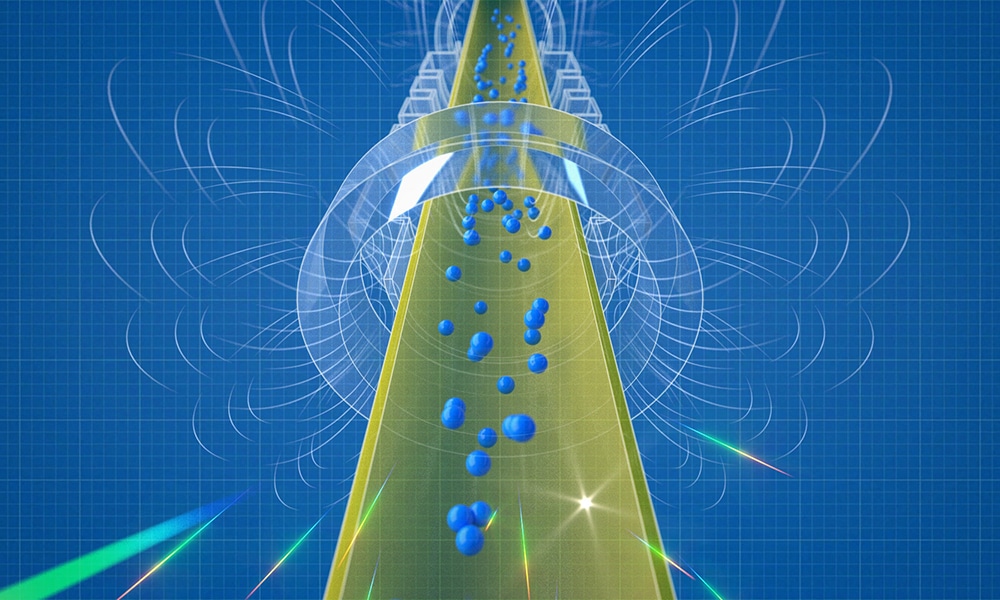PARIS: For the first time, scientists have observed antimatter particles — the mysterious twins of the visible matter all around us — falling downwards due to the effect of gravity, Europe’s physics lab CERN announced on Wednesday. The experiment was hailed as "huge milestone”, though most physicists anticipated the result, and it had been predicted by Einstein’s 1915 theory of relativity.
It definitively rules out that gravity repels antimatter upwards — a finding that would have upended our fundamental understanding of the universe. Around 13.8 billion years ago, the Big Bang is believed to have produced an equal amount of matter — what everything you can see is made out of — and antimatter, its equal yet opposite counterpart.
However, there is virtually no antimatter in the universe, which prompted one of the greatest mysteries of physics: what happened to all the antimatter? "Half the universe is missing,” said Jeffrey Hangst, a member of CERN’s ALPHA collaboration in Geneva which conducted the new experiment. "In principle, we could build a universe — everything that we know about — with only antimatter, and it would work in exactly the same way,” he told AFP.
Physicists believe that matter and antimatter did meet and almost entirely destroyed each other after the Big Bang. Yet matter now makes up nearly five percent of the universe — the rest is even less understood dark matter and dark energy — while antimatter vanished.
Newton’s apple flying up
One of the key outstanding questions about antimatter was whether gravity caused it to fall in the same way as normal matter. While most physicists believed that it did, a few had speculated otherwise. A falling apple famously inspired Isaac Newton’s work on gravity — but if that apple was made of antimatter, would it have shot up into the sky? And if gravity did in fact repel antimatter, it could have meant that impossibilities such as a perpetual motion machine were possible. "So why not drop some and see what happens?” Hangst said.
He compared the experiment to Galileo’s famous — though likely apocryphal — 16th-century demonstration that two balls of different mass dropped from the Leaning Tower of Pisa would fall at the same rate. But this experiment — the result of 30 years of work on antimatter at CERN — was "a little bit more involved” than Galileo’s, Hangst said. One problem was that antimatter barely exists outside of rare, short-lived particles in outer space. However in 1996, CERN scientists produced the first atoms of antimatter — antihydrogen. Another challenge was that, because matter and antimatter have an opposite electrical charge, the moment they meet they destroy each other in a violent flash of energy scientists call annihilation.
A magnetic trap
To study gravity’s effect on antimatter, the ALPHA team constructed a 25-centimetre-long (10-inch) bottle placed on its end, with magnets at the top and bottom. Late last year, the scientists placed around 100 very cold antihydrogen atoms into this "magnetic trap” called ALPHA-g.
As they turned down the strength of both magnets, the antihydrogen particles — which were bouncing around at 100 meters a second — were able to escape out either end of the bottle. The scientists then simply counted how much antimatter was annihilated at each end of the bottle. Around 80 percent of the antihydrogen went out of the bottom, which is a similar rate to how regular bouncing hydrogen atoms would behave if they were in the bottle. This result, published in the journal Nature, shows that gravity causes antimatter to fall downwards, as predicted by Einstein’s 1915 theory of relativity. In more than a dozen experiments, the CERN scientists varied the strength of the magnets, observing gravity’s effect on antimatter at different rates.
While the experiment rules out that gravity makes antihydrogen go upwards, Hangst emphasized it did not prove that antimatter behaves in exactly the same way as normal matter. "That’s our next task,” he said. Marco Gersabeck, a physicist who works at CERN but was not involved in the ALPHA research, said it was "a huge milestone”. But it marks "only the start of an era” of more precise measurements of gravity’s effect on antimatter, he told AFP.
Other attempts to better understand antimatter include using CERN’s Large Hadron Collider to investigate strange particles called beauty quarks. And there is an experiment onboard the International Space Station trying to catch antimatter in cosmic rays. But for now, exactly why the universe is awash with matter but devoid of antimatter "remains a mystery,” said physicist Harry Cliff. Since both should have annihilated each other completely in the early universe, "the fact that we exist suggests there is something we don’t understand” going on, he added. – AFP


